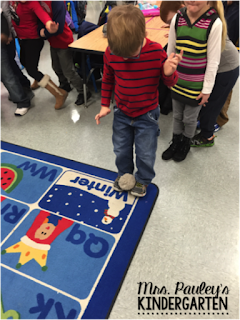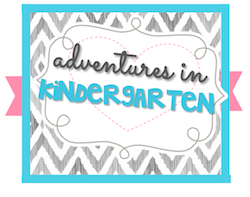Hi friends, it's Amanda here from Mrs. Pauley's Kindergarten with you today! I wanted to share with you today some of my favorite penguin activities to do with primary students.
It seems like every time I talk about the unit we are working on I always say, "This is my favorite unit to teach!" I love a lot of the thematic units I teach in my classroom, but I really love teaching about penguins.
The first activity is something we do outside. We talk about how the penguins in the rookery huddle together to stay warm. Then we go outside and put it into practice.
First, we stand all by ourselves and then huddle together and see if we are any warmer than before. I snapped this cute pic of all my kiddos huddling together. Best part was then today at recess I heard a couple of the kids complaining they were cold and another student said, "Let's huddle together like the penguins then. That will keep us warm." And they did and it was adorable!
The second activity I like to do is with oil and water. I put some water into a gallon baggie and then added some oil. The students tried their hardest to mix them up together, but they realized that oil and water just don't mix. We used this experiment to talk about preening and how the oil on the penguins' feathers helps them swim in the water.
I also had the students just dip a finger into the oil by itself to see how it felt. That way they understand what the penguins feathers feel like.
The last activity I always do on the last day of our unit. PENGUIN RACES! It is so much fun. The kiddos have a blast.
We pretend to be emperor penguins and the students try to get from one side of the carpet to the other with keeping their "egg" on their feet. I used yarn balls for the "eggs."
Lastly, we had just a plain old penguin waddle relay race. They thought this was hilarious.
I have some pretty good waddlers in my classroom! ;)
If you would like to see more ideas like these, you can check out my blog, instagram, or Facebook page. Have a great rest of your week!
















































